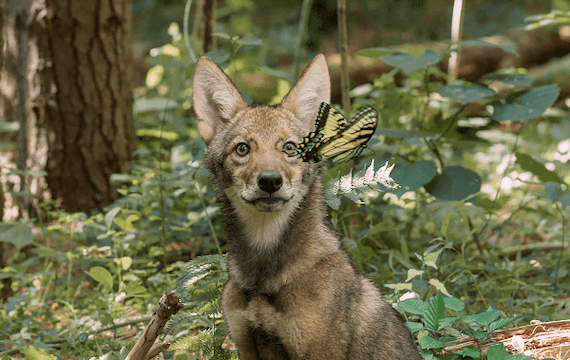CINCINNATI – Dire wolves and mastodons will once again prowl the halls of Cincinnati Museum Center (CMC). After extensive updates, the beloved Ice Age Gallery will emerge from its hibernation and transport guests back in time 15,000 years to the Pleistocene on July 1. The updated gallery will use the past to inform the present, blending scientific analysis with awe-inspiring displays of prehistoric beasts and immersive landscapes.
Drawing on the strengths of its paleontology collections, CMC’s Ice Age Gallery will immerse guests in the Pleistocene, surrounding them with its sights and sounds. The chilly ice cave and trail populated by giant bison, saber-toothed cats, the Jefferson ground sloth and the iconic dire wolves return with Ice Age plants, updated lighting and soundscape and new projections that illustrate how giant glaciers scoured and shaped the Miami Valley.
During the Ice Age, the Greater Cincinnati region was a crossroads for megafauna drawn to natural salt deposits in the area. As mastodons, mammoths, giant bison and towering ground sloths grazed on the plains, dire wolves and saber-toothed cats prowled the forests. Human hunters, too, stalked the massive beasts. These movements, the stampede of hooves, paws and feet, carved the trails followed by early pioneers and settlers and, eventually, modern roadways. The evidence of the clashes between predator and prey are scattered along creek beds and buried under rocks throughout the region.
“The impacts of the Pleistocene Epoch continue to resonate today. In fact, it is the animals of the Pleistocene discovered near Big Bone Lick that launched the first paleontological expedition, making it the birthplace of American vertebrate paleontology,” says Glenn Storrs, Ph.D., Withrow Farny Curator of Paleontology at Cincinnati Museum Center.
New to the gallery is a fully-articulated mastodon skeleton that will convey the size of the prehistoric beast in stunning detail. An ancient giant bison skeleton will also be on display, along with horns and skull specimens alongside modern bison specimens, showing the similarities and stark differences between the ancestors. The ways animals adapted from the Pleistocene to modern eras will be further illustrated by several other bone and fossil specimens, including prehistoric dire wolves, saber-toothed cats, North American lions and giant beavers and modern gray wolves, mountain lions, jaguars and beavers. A collection of Clovis points – stone points used as tools and weapons including darts and spears – help tell the story of human interaction with other animals living in the region at the time.
Also new to the Ice Age Gallery is a more thorough examination of climate change. Geologic evidence of climate change is supported by the changes in plant and animal species, including their size, unique adaptations and extinction. The Pleistocene and its tragic end for many species is one example of natural climate change, but the impact of humans is illustrated in stark detail by modern scientific research – human actions are causing the rapid rise in global temperatures we are experiencing today. Like the climate change animals faced at the end of the Pleistocene, scientists with citizen scientist partners are documenting disruptions that affect the ability of animals to thrive as conditions change. Like their (and our) ancestors, species today need to adapt and move or perhaps face extinction. Fortunately, scientific research also shows us the many choices we can make, as individuals, as communities and on a global scale to manage how much and how quickly global temperatures may rise.
“We wanted to tell two stories of climate change through our Ice Age Gallery. One of the Pleistocene, in which gradual but natural changes led to significant changes and dire outcomes for some of the Ice Age’s species; and one of our current era, in which rapid, manmade impact could irreversibly upend ecosystems,” says Elizabeth Pierce, president and CEO of Cincinnati Museum Center. “The hope is that we can educate this and future generations who may be better stewards of our planet and all its inhabitants.”
CMC’s Champion More Curiosity campaign is making updates to the Ice Age Gallery possible. This $85 million campaign will reimagine CMC’s exhibits and programming. CMC is seeking community support to close out the campaign’s final $18 million. To donate or learn more information about Champion More Curiosity, visit supportcmc.org.
For more information, visit cincymuseum.org




